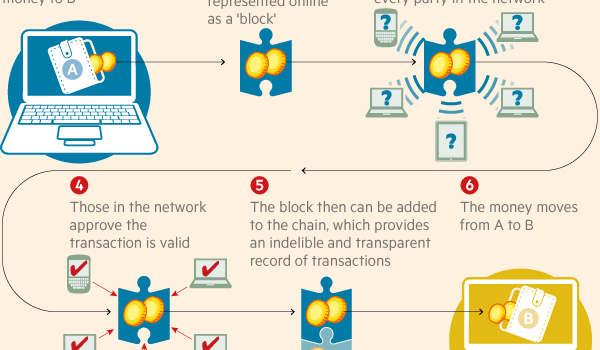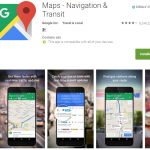Blockchain: What Is It and How Can We Use It?
Blockchain has become one of the newest popular tech terms, with new articles being published on the topic everyday, but most engineers are probably still wondering what is this bitcoin-based technology and what can it do? Simply put, blockchain is a distributed ledger technology. In the case of bitcoin, this ledger is completely public and distributed to everyone in the bitcoin community. The ledger has unique attributes that allow the blockchain to be extremely efficient.
Advantages of Blockchain
A blockchain is made up of a series of data called blocks. Each block in the chain contains various elements, most importantly: a timestamp, a hash, a reference to the previous block, and the block’s body. The timestamp and reference to the previous block are extremely important because they allow the blockchain to remain unaltered. This is one of blockchain’s biggest advantages: the ability for archived information to never be modified. The hash contains references to all of the block’s basic information and is referenced by the next block, linking all the blocks together in one big chain. The body of the block can contain almost anything. In the bitcoin use case, the body consists of all the transaction information.
Uses of Blockchain
The idea of blockchain was popularized by bitcoin, but it is starting to be used for purposes beyond tracking digital currency. This technology is flexible and can be used to store information of all types, making it appeal to many different companies. For example, banks are extremely interested in utilizing blockchain technology to keep track of all their transactions in a more efficient way.
Originally, blockchain was meant to be a completely public ledger with the public controlling its integrity. This unrestricted structure doesn’t work for a lot of companies, especially banks, who would like a more private way to keep track of their transactions. Luckily, with the increased popularity of blockchain there has also been an increase in the different types of permissions that can be used with the technology. Some blockchains can be distributed to a specific group of people and give access only to this group of people, or they can be distributed to the public but be maintained by selected individuals. The flexibility of blockchain is one of the factors that has made it so popular.
Blockchain is formatted to work best in financial situations where transactions need to be recorded. In the future it could be used for several different monetary uses: organizing syndicated loans, improving private stock transactions, and improving the efficiency of credit-default swaps.
Blockchain and Customer Identity and Access Management
Although financial use cases can seem to be the only way to utilize the blockchain technology, there are many companies starting to find non-financial ways to harness the power of blockchain. Storing digital documents, verifying the validity of diamonds or gold, creating smart contracts, eliminating voter fraud, and tracking customer identity can all be done by using blockchain. Here’s where blockchain can be useful for the identity industry.
One idea for the implementation of digital identification is to allow a user to store an identity record on the blockchain that has been sealed with a private key, to ensure that only the user can modify it. The stored record could then be accessed by the user and sent with the public key to any company that requires identity confirmation. This use case for identity on the blockchain has been implemented by Shocard, who is working with the air transport industry to make it easier for travelers to manage their identification, as described in a recent TechCrunch article.
The idea of using blockchain for customer identity is starting to become more widespread. In June, IBM partnered with a French bank, Crédit Mutuel Arkéa, to use blockchain specifically for managing customer identity and improving the satisfaction of the bank’s customers. According to IBM’s news release, this new technology “reinforces consistency, traceability and privacy of the information.” By reinforcing these things, it would make it easier for the bank to verify the identity of their customers after asking them for proof of their identity.
Recently, many companies are trying to create a new business plan using the word “blockchain” because of its sudden popularity, but is using blockchain really the best thing for these companies? The original goal of blockchain was to be a distributed ledger that everyone could see and edit. Certain companies may not want this lack of privacy for their customers, so they’re giving them blockchain permissions. Again, this is not the way bitcoin originally created blockchain, so there is still debate on if this new, more private, technology can be considered a true blockchain.
Blockchain and customer identity and access management: a match made in heaven? Not exactly, but that doesn’t mean they can’t work together and be successful in the future. Despite this potential success, there are still conversations being held about if it’s worth bending the blockchain technology to an industry’s specific use case. Regardless of whether the CIAM industry embraces blockchain, this technology is powerful, efficient and revolutionary. The term “blockchain” will not be disappearing anytime soon.
















